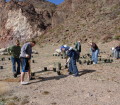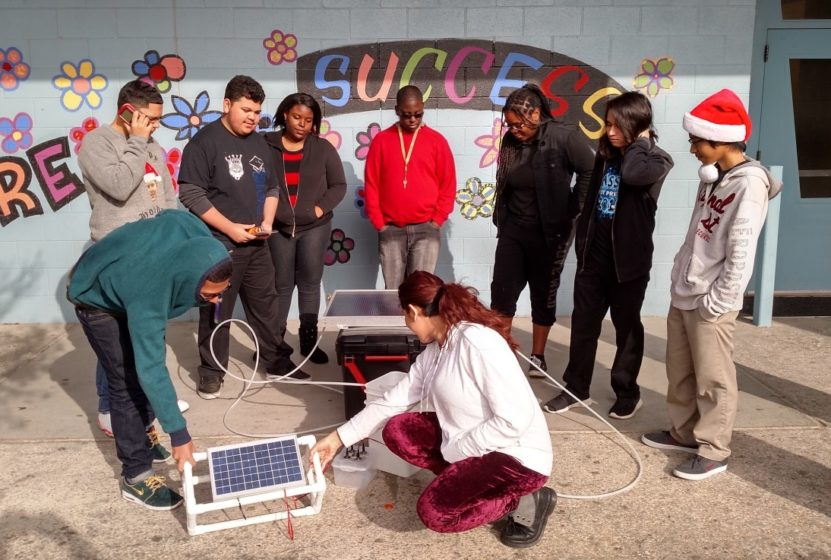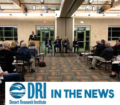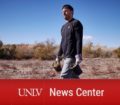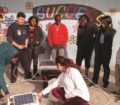Solar Kit at West Prep High School
–D. Niskar Photo
Shining a Light on Solar
NEXUS Solar Kits project illuminates solar energy concepts for both teachers and high school students
By Jane Palmer
February, 2017
Solar To Go
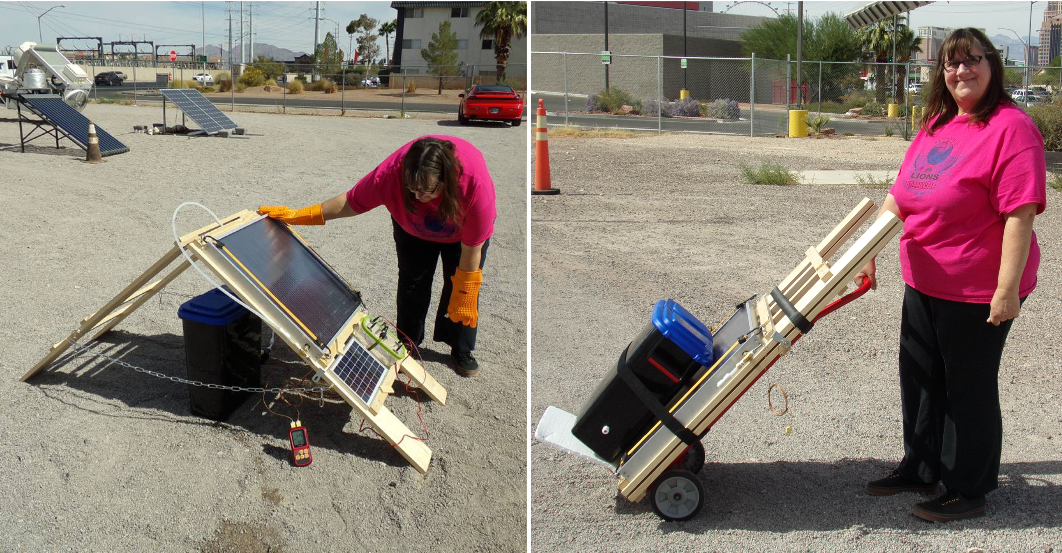
Solar Kit in Action (left) and Ready for Transport (right)
–E. Marti Photo
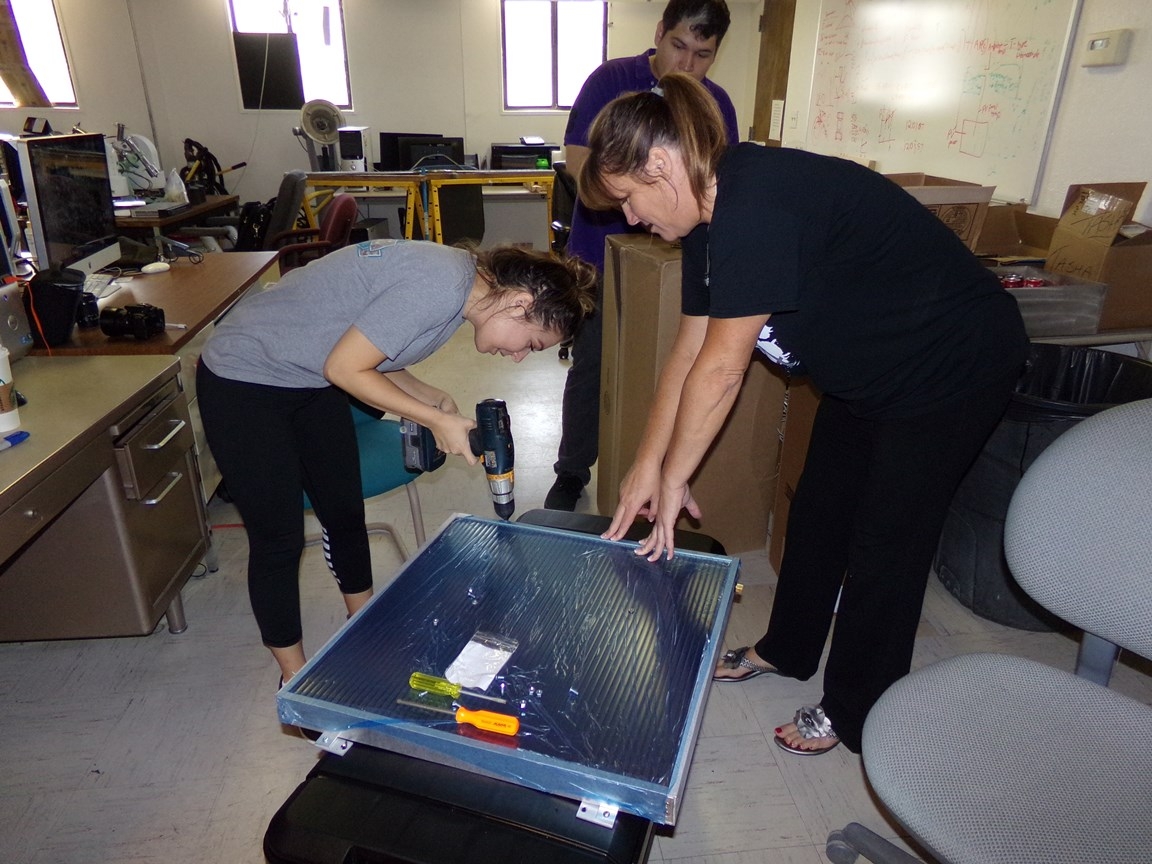
Participants Constructing the Solar Kit
–E. Marti Photo
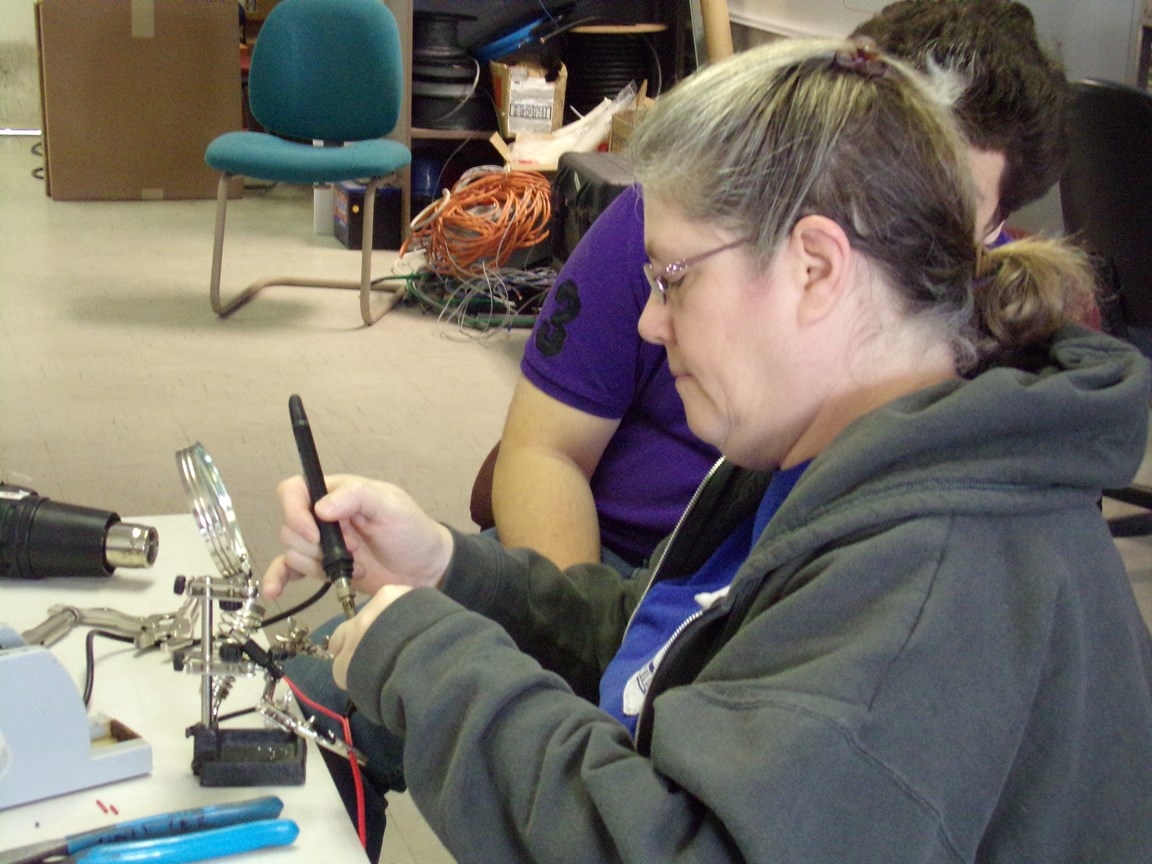
Professional Development Participant Learning to Solder
–E. Marti Photo
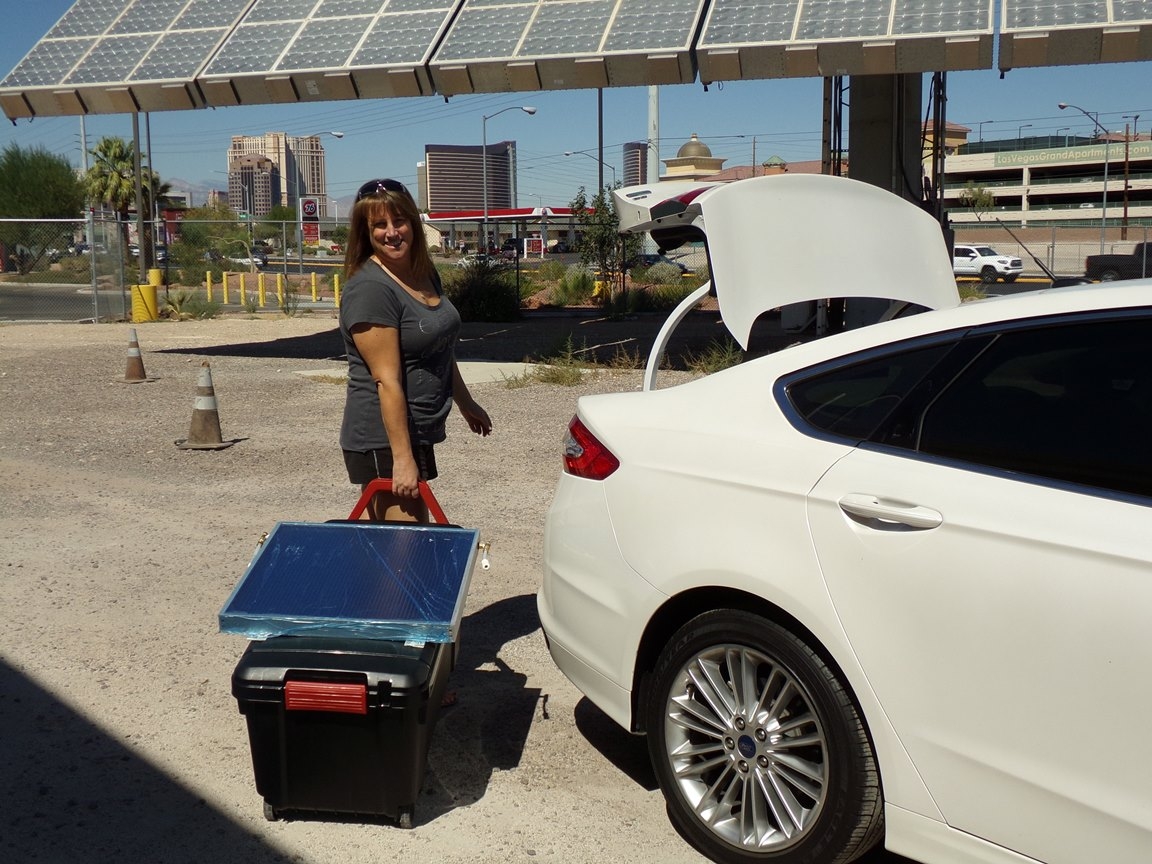
Completed Solar Kit En Route to Classroom
–E. Marti Photo
New Avenues to a Science or Engineering Career
The feedback from the teachers who’ve used the kits so far has definitely been positive, Marti says. “They’ve been very pleased, both in terms of what they are learning, especially the engineering design, and then having something that is specific for their classroom because they designed it that way,” Marti says.
But in applying the principles of engineering design to the kits and training itself, Marti continues to work on improving how best to teach the solar energy concepts. “It’s important because if the teachers don’t really understand solar energy concepts, the children won’t understand them quite so well,” Marti says. “Likewise, if the teachers feel confident in teaching engineering design, the children will pick up on that.”
Marti’s ideal is that solar energy education becomes a component in every high school in Las Vegas and that each high school student gets to experience “real world” engineering challenges. “Right now, not that many students are exposed to these at an early age,” Marti says.
Marti hopes that these experiences will give the students an insight into careers in solar energy or engineering, making them interested in a future career in these fields. “I would like there to be a very easy or very visible pipeline for students who want to work in solar energy, so that they know what the field entails, how to get educated and how to get a job in the community where they grew up,” Marti says.
The solar kits may help some students find a fulfilling career, without having to leave the sunny state of Nevada, Marti hopes. “Some people think that if you’re going to get job as an engineer, you’ll have to move,” she says. “But in this case, Nevada is one of the top places where you could get a job in solar energy.”
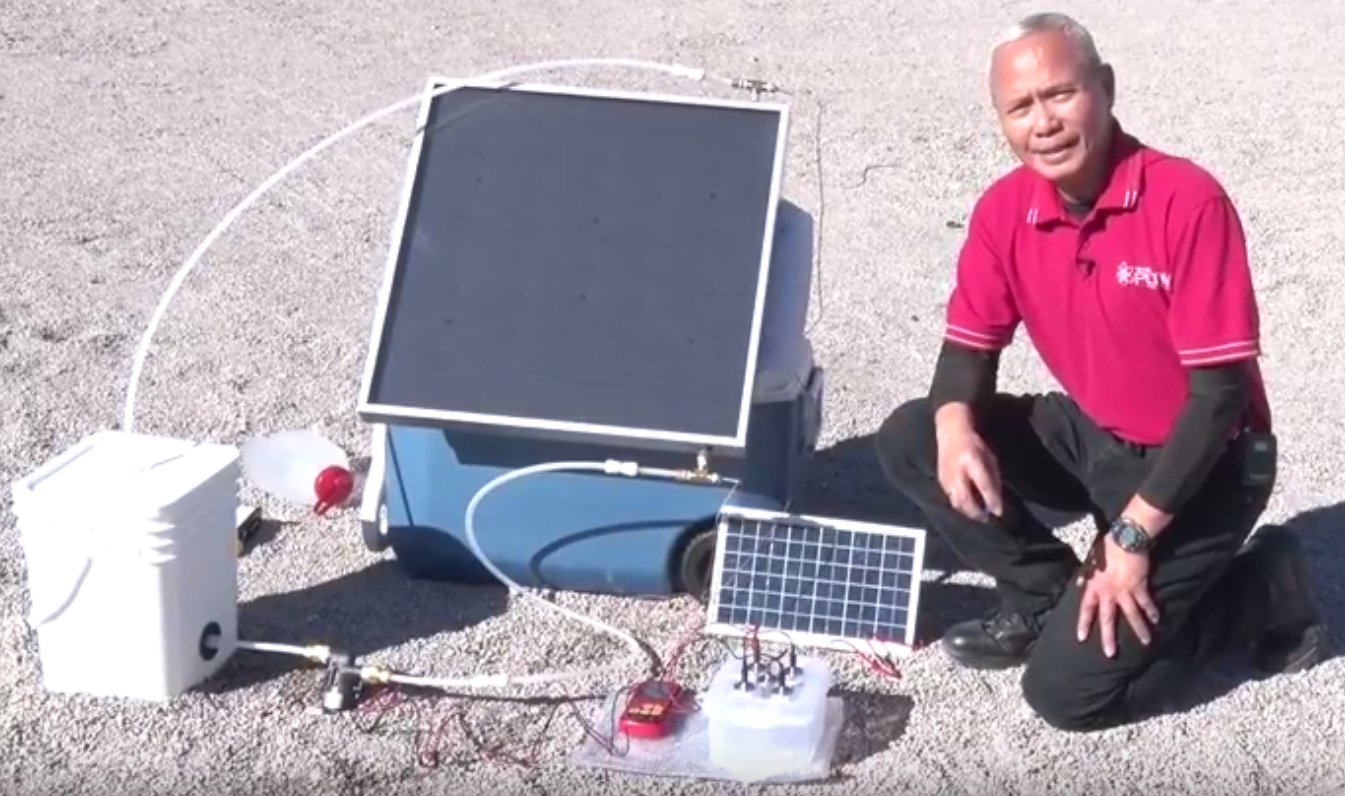
Participant with Finished Solar Kit
–D. Woods Photo
_______________________________________
Perspective of a Participant
_______________________________________
~Jacqueline Theriault, Science Teacher, Science Fair Club Advisor
Sierra Vista High School, Las Vegas
_______________________________________

NEXUS Notes is a monthly publication of the Solar Nexus Project, which is a five-year research project funded by the National Science Foundation’s Experimental Program to Stimulate Competitive Research “EPSCoR” (Cooperative Agreement #IIA-1301726) focusing on the nexus of (or linkage between) solar energy generation and Nevada’s limited water resources and fragile environment.
Any opinions, findings, and conclusions or recommendations expressed in this material are those of the author(s) and do not necessarily reflect the views of the National Science Foundation.
_______________________________________
If you would like to know more about the NEXUS project,
please contact, Dr. Gayle Dana
Gayle.Dana@dri.edu
530-414-3170
_______________________________________


